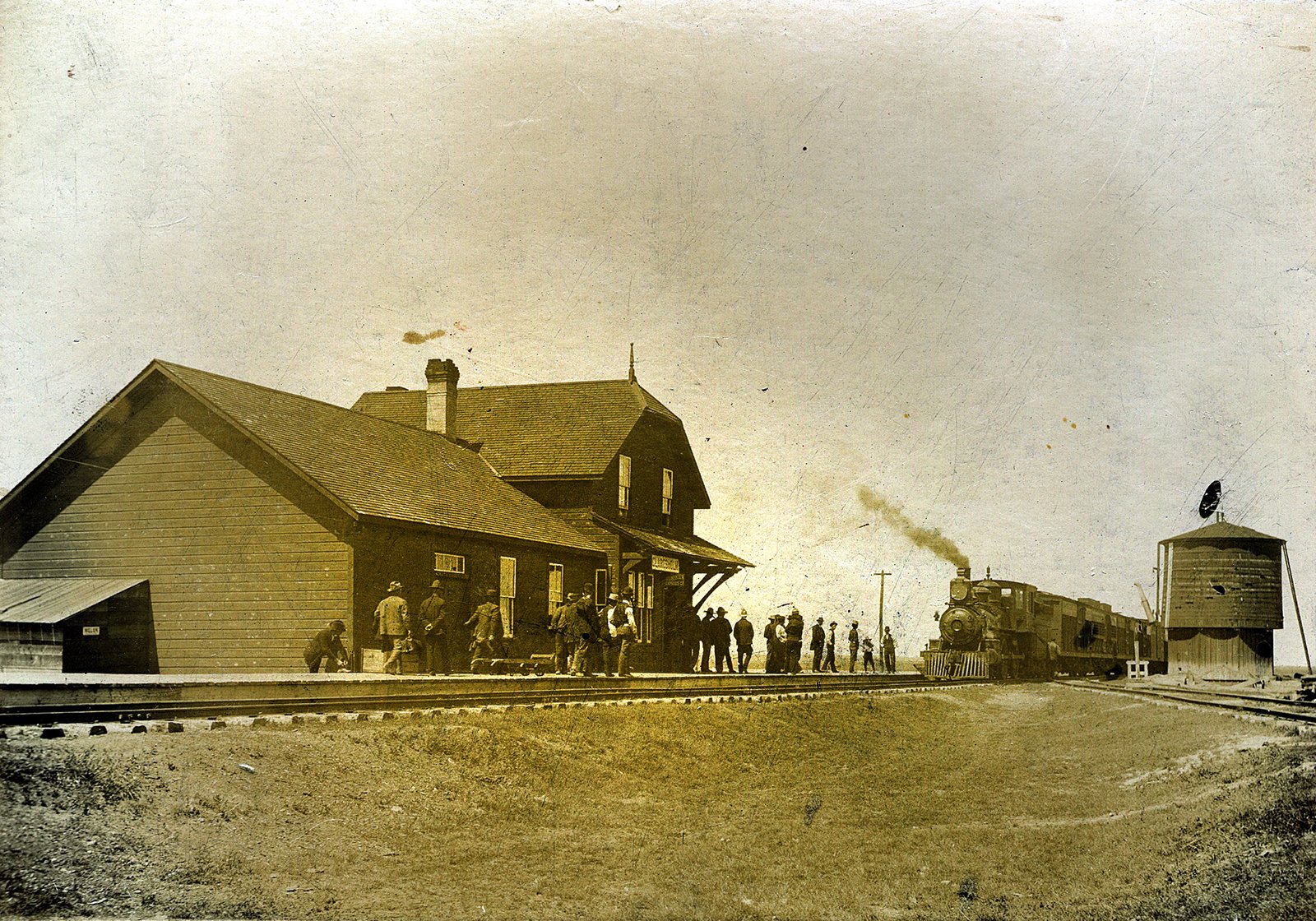100 Years Back: Naming Southern Alberta
Photograph of the Canadian Pacific Railway Station at Claresholm, 1903.
Photo courtesy Galt Museum & Archives, 19730090000.
Have you ever driven through a town and wondered how it got its name? There’s more than a few peculiar stories behind the names of southern Alberta towns.
Plenty of local rural communities were named after male founding figures—Macleod, Magrath, Nobleford, to name a few. One exception to this is Claresholm—named after Clare Niblick, the CPR superintendent’s wife.
Some communities bucked the trend of naming towns after people, and came up with more imaginative names. The hamlet of Monarch, northwest of Lethbridge, was named in 1908 after the British sovereign, with streets names to match—Alexandra, Empress, Prince, Princess and Victoria.
Diamond City, north of Lethbridge, is another small hamlet with a big name. It was originally to be called “Black Diamond Mine,” likely in reference to the coal deposits. But the name had already been taken by Black Diamond southwest of Calgary, so they had to come up with an alternative. The result is the sparkliest place name in Canada!
The term “butte” often appears in western Canadian place names. A butte is an isolated hill, not quite a mountain, with steep or precipitous sides and a relatively flat top. The name of Picture Butte, further north of Lethbridge than Diamond City, was derived from the Blackfoot toponym anatskim-ikway (“the beautiful hill”) or ist-sanatshimekay (“that beautiful hill that can be seen from afar”). Sometimes a site outlives the eponymous geography that provided its name. In the case of Picture Butte, the hill is no longer there—the earth has been removed for local road and construction projects over the years.
Pincher Creek derives its name from a particular pair of pincers, used for re-shoeing horses, that were supposedly lost in the waterway. Who lost them, and exactly where, is a subject of debate, but apparently the loss was painful enough to be commemorated on the map for years to come.
The medieval-sounding locality Fincastle, east of Taber, has never had anything resembling a castle. The name comes from an aristocratic title of Earl of Dunmore—Viscount Fincastle.
Bow Island, incorporated in 1912, was so named due to a clerical error—the name was intended for another geographical location, an actual island at the confluence of Bow and Oldman rivers, north of Grassy Lake.
These are just a few examples of clever place names in southern Alberta, but there are plenty more. Do you know the story of your favourite town? To learn more, visit www.galtmuseum.com/research.











We might all have that one family member who can magically repurpose old fabrics into warm quilts. Some assume that making a quilt is simple, but the process is quite lengthy. Quilters must plan out their design, pin cloth together, and sew through many layers of fabric. The Galt Museum & Archives has a large collection of quilts. Within this collection are five quilts by Katherina Betts that were donated by her son Ed and daughter-in-law Gloria Betts.